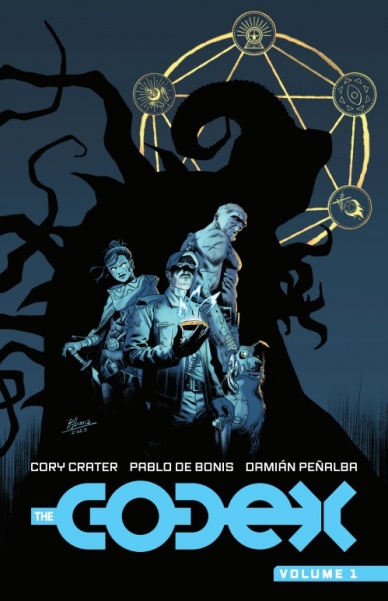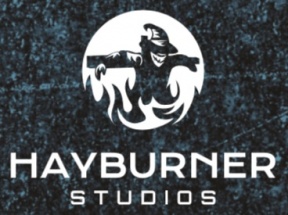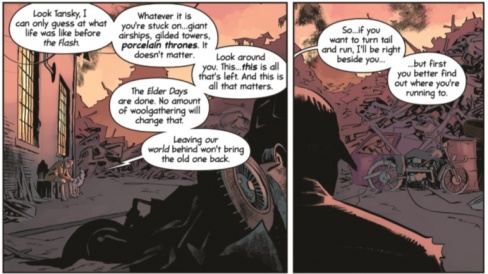
This book is great. Let me tell you why you should spend your money on it. You can thank me later.

The story is written by Core Crater, an experienced creator but first-time comic scripter. It began as a side project for him during the COVID lockdowns, a personal project inspired by “Lord of the Rings” intended only to fill his time. As a fan of James Tynion, Brian K Vaughn, and Jeff Lemire, the comic format was a natural choice. He completed the first two volumes over a twelve-month period, then went back and revised them to add new ideas and tighten connections between existing ideas. Before long, “The Codex” outgrew its “LotR” roots and blossomed into its own thing. Crater began to believe the project had some real potential and wanted to develop further.

He tried to keep his hopes for it grounded, however. When choosing a studio name, he went with “Hayburner,” a term usually reserved for a race horse that uses up its owner’s resources but doesn’t earn any money. (Honestly, the concept is so apt for comics that I’m surprised it wasn’t used decades ago.) Now committed to making “The Codex” a reality, Crater needed an artist.
He went to his local Mile High Comics, where he browsed for three hours and made a list of artists he liked. After choosing Damian Couceiro based off his work on “Cluster” with Ed Brisson, Crater set out to get him. They connected through email quickly and Couceiro was very interested, but he was already committed to another project. Fortunately, Couceiro pointed Crater toward Argentine artist Pablo De Bonis, who has a similar style that Crater felt was perfect for “The Codex.”

De Bonis brought the story to life. Crater freely admits that his scripts were sometimes wordy and that he would veer into purple prose during exciting moments. De Bonis cut through that and delivered the story with a visual grandeur that makes the melodrama believable (editor Ryan Stewart helped too). Damiàn Peñalba‘s colors enhance the whole package with a dirty, lived-in feeling.
Crater funded the production of “The Codex” through his day job, and the first volume was complete and ready for printing when he launched the project on Kickstarter. Hoping for backing of $20,000 to recoup some expenses and pay for printing, the goal has already been surpassed. (You still have until Friday the 15th to support it).
But now that you know all this background about the comic being made, the real question is if the book worth supporting. The short answer is “yes.” The long answer is “absolutely yes.”
The story, as summarized above, is a straightforward hero’s journey. This volume hits on many of the familiar tropes of the post-apocalyptic genre, but the fantasy elements add a fresh twist to them. And really, that’s what fans of any genre want: fresh takes on a familiar story. “The Codex” features a convincing cast, and you’ll quickly find yourself caring about them. The various stops along their journey are entertaining and unique. De Bonis’ art is deliberate and compelling, with thoughtful choices that enhance the story without being intrusive. My favorite sequence are two panels in a junkyard. Tansky is at a low point, and a pile of junk in the first panel transitions into his left side as the POV changes in the second panel: Tansky’s metaphorical feeling of himself as worthless made literal.
Continued below
The story of “The Codex” is not resolved in this volume. De Bonis has already completed about 50 pages of the second volume, and Crater is almost finished with a script for the third volume. Plans are to release a new volume annually until the fifth volume wraps things up.
If you like post-apocalyptic stories, you need to read “The Codex.” If you don’t like them, I strongly urge you to give “The Codex” a try anyway. It’s a strong representative of the genre and might help you understand why it’s so popular.






